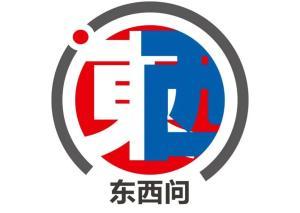Exclusive interview with Associate Professor Sun Wenjie from the School of Physical Education at China University

During the Dragon Boat Festival, lively dragon boat scenes unfold across China, with boats racing one after another, creating a spectacular holiday spectacle. Dragon boat racing, a traditional Chinese sport, has also gained popularity overseas. From the «dragon boat banquets» of Chinese communities in Southeast Asia to dragon boat races in Cape Town (South Africa), from dragon boat training camps in Argentine Chinese communities to the Chinese Dragon Boat Club in Italy—how has this millennia-old tradition left its mark abroad?
Recently, Associate Professor Sun Wenjie from the School of Physical Education at China University shared insights on how dragon boat racing evolved from a folk symbol to an international language.
Key highlights from the interview:
Question: What stages has dragon boat racing undergone in its development—from a traditional Chinese folk activity to a popular competitive sport? What factors contributed to its spread overseas?
Sun Wenjie: The global spread of dragon boat racing can be divided into four stages: originating during the Warring States period as a ritual and prayer; evolving into a folk and competitive activity during the Ming and Qing dynasties; in the mid-19th century, Hong Kong Chinese introduced dragon boat culture to Southeast Asia, the Americas, and Europe, making it a symbol of cultural identity for overseas Chinese communities; in 1976, the first Hong Kong International Dragon Boat Invitational Race was held, pushing the sport toward internationalization, followed by the establishment of the International Dragon Boat Federation, which standardized rules and accelerated competitive progress; in the 21st century, dragon boat racing integrated with environmental protection and social welfare, among other fields, achieving localization in countries like the U.S., Australia, Germany, and Argentina, fostering cross-cultural integration.
Five key factors enabled dragon boat racing to take root overseas: Chinese communities laying the foundation through festival organization; China promoting dragon boats as a cultural symbol; international sports organizations standardizing rules, hosting competitions, and commercializing the sport; the competitive nature aligning with Western values; and media promotion helping diverse ethnic groups understand and participate. Additionally, the teamwork and collaboration emphasized in dragon boat racing resonate in corporate culture and education, enhancing global adaptability.

Question: What are the biggest challenges dragon boat racing faces in international promotion, and how can they be addressed?
Sun Wenjie: The main challenge lies in adapting cultural symbols to a global linguistic environment. Cultural differences and language barriers often reduce dragon boat racing to a mere water sport overseas, obscuring its underlying values of collectivism, harmony between humans and nature, and traditional festival customs.
This cognitive gap stems from structural differences in language systems and civilizational values. Additionally, some international promotion remains superficial, lacking systematic and localized reconstruction, hindering genuine integration into local societies.
Promoting dragon boat culture abroad requires innovative communication models. On one hand, leveraging new media tools like short videos and live streams can create an integrated online-offline communication structure, enhancing interactivity. On the other hand, deepening cultural interpretation is crucial—systematically analyzing its historical roots and spiritual foundation while linking its values (teamwork, courage, pioneering spirit) to global cultural recognition.
For example, incorporating traditional ceremonies like «eye-dotting» and drum awakening into competitions can blend cultural elements with competitive mechanisms, enriching the cultural atmosphere. Furthermore, introducing dragon boat racing into overseas schools and Chinese education systems, along with developing cultural courses, can turn it into an educational tool for cultural transmission.
Simultaneously, fostering intercultural communication talent—utilizing bilingual educators and international students—can facilitate precise dissemination and deeper recognition of dragon boat culture through localized expression, ensuring broader transmission and sustainability abroad.

Question: What is the essence of dragon boat racing as a cultural ambassador, and what unique role does it play in preserving Chinese culture?
Sun Wenjie: Dragon boat racing transcends language barriers




